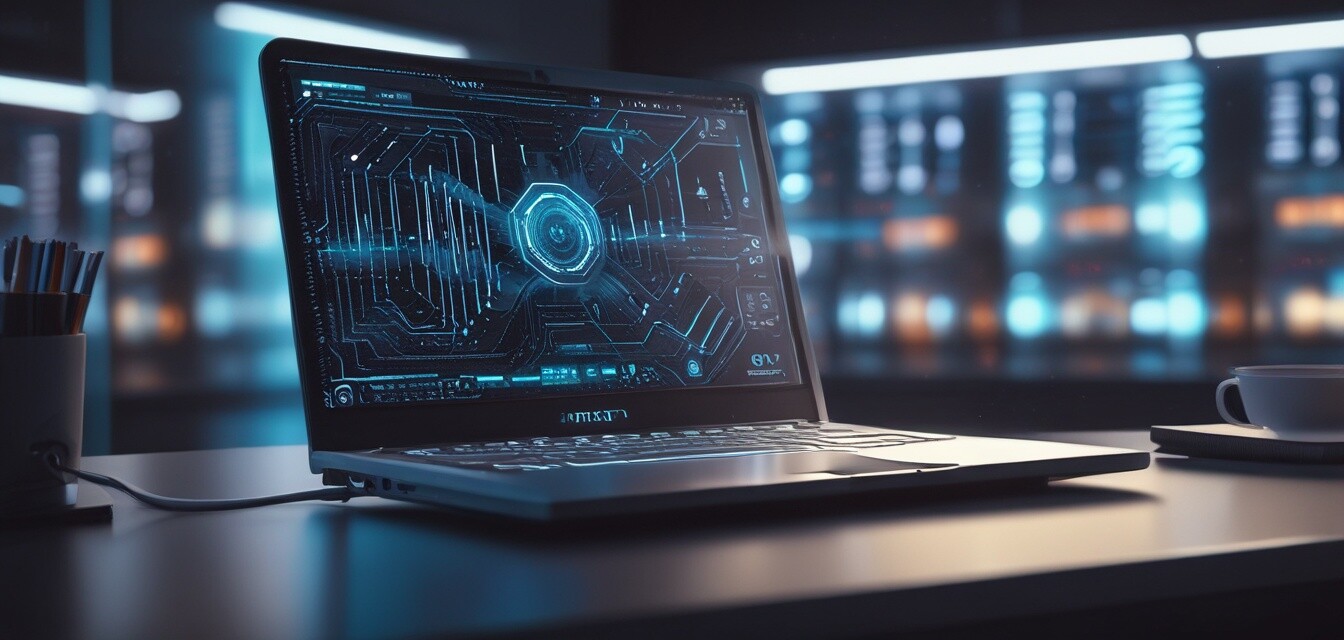
How Artificial Intelligence is Shaping Laptop Design
- AI is driving innovation in laptop design, enhancing user experience.
- Smart features enable personalized settings and improved functionality.
- Cooling systems and battery efficiency are revolutionized through AI algorithms.
- AI enhances security features, making laptops safer for users.
- Design aesthetics are influenced by AI trends for a modern and sleek look.
The world of laptops is undergoing a significant transformation thanks to the rapid advancements in Artificial Intelligence (AI). This technology is not just confined to software applications; it is increasingly being integrated into the very design of laptops. In this article, we will explore how AI is influencing everything from user interfaces to hardware components, shaping the way laptops look and function.
The role of AI in modern laptop design
AI is redefining the standards of what consumers expect from their laptops. Designs that once seemed futuristic are now becoming the norm, driven by technological innovation and consumer demand. Here are several key areas where AI is making a noticeable impact:
1. Smart User Interfaces
AI-powered user interfaces are creating a more intuitive experience for users. This includes:
- Adaptive Interfaces: Laptops can change their settings based on user behavior and needs.
- Voice Assistants: Enhanced integration of AI assistants for seamless user interaction.
- Gesture Control: AI allows for new ways to interface with devices, minimizing the need for physical input.
2. Enhanced Performance Management
Performance management has seen a revolution due to AI, optimizing how laptops operate. Key aspects include:
- Resource Allocation: AI analyzes workload and allocates system resources accordingly.
- Battery Management: Intelligent monitoring helps extend battery life by predicting usage patterns.
- Cooling Systems: AI algorithms optimize fan performance and temperature regulation.
3. Improved Security Features
With increasing concerns over privacy, AI is enhancing security measures to protect user data:
- Facial Recognition: AI systems enable quick and secure logins that are personalized to the user.
- Behavioral Analytics: AI monitors user patterns to detect anomalies that could signify security threats.
- Encryption Protocols: AI-enhanced encryption ensures data safety and integrity.
How design aesthetics are influenced by AI
Beyond functionality, AI is also driving changes in the aesthetics of laptop designs. Modern laptops are becoming sleek and stylish, reflecting contemporary trends:
- Minimalistic Design: AI sketches out designs with fewer buttons and ports, favoring a cleaner look.
- Color Accuracy: AI techniques are being used to produce displays with higher color fidelity.
- Eco-Friendly Materials: AI aids in selecting materials that are both durable and environmentally friendly.
AI technologies shaping the future of laptop design
The integration of specific AI technologies in laptop design continues to push boundaries:
| AI Technology | Application | Impact on Design |
|---|---|---|
| Machine Learning | Performance Optimization | Dynamic adjustments to enhance the user experience based on usage patterns. |
| Natural Language Processing | Voice Interaction | Creating voice-responsive UIs that adapt in real time to user commands. |
| Computer Vision | Facial Recognition | Enhanced security features improving access control. |
| AI-Driven Predictive Analytics | Battery Management | Extending battery life through intelligent consumption predictions. |
Industry examples of AI in laptop design
Different companies are pioneering the integration of AI into laptop design. Some notable examples include:
- Case studies detailing AI innovations
- How ultrabooks leverage AI for better portability
- Gaming laptops incorporating advanced AI features
- Affordable laptops enhancing value through AI
Future trends in laptop design driven by AI
As AI technology progresses, we can expect to see even more radical changes in laptop design:
- Integration of Augmented Reality: Expect AI to facilitate better AR experiences directly from laptops.
- Enhanced Customization: Future laptops may allow users to significantly customize designs through AI during purchase.
- Foldable Screens: AI will play a role in managing pixel performance in new screen formats.
Pros
- Improved user experience through intuitive interfaces
- Enhanced security measures for data protection
- More efficient performance and resource management
- Modern aesthetics appeal to contemporary users
Cons
- Potential over-reliance on technology could lead to issues if AI fails
- More complex systems may be more difficult to troubleshoot
- Higher costs associated with advanced AI features
Conclusion
Artificial Intelligence is undeniably changing the landscape of laptop design. From smarter user interfaces to enhanced security measures and more efficient performance, the impact of AI is profound and far-reaching. As we move forward, we can only anticipate even greater innovations that will redefine what laptops can do and how they fit into our lives. For those looking to stay updated on this rapidly changing field, following our News and Trends category will provide valuable insights into the latest developments.